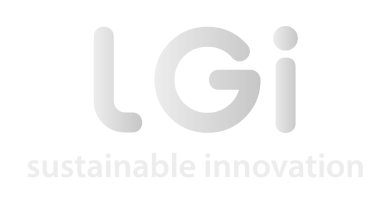What is lump sum funding?
Lump sum funding is a new way to apply for EU funding and manage projects. The idea is to simplify the process of traditional (grant-based) funding, which is complex and prone to errors. The headline feature of lump sum funding is the elimination (or rather drastic reduction) of financial reporting: you provide an up-front estimation of the costs of your project in the proposal phase, and once your budget is fixed in the Grant Agreement (GA), the European Commission (EC) will not control how you spend it, as long as you deliver what you promised in the proposal. This does not mean that your project must be successful – this is research, after all – but simply that you need to make any effort necessary to deliver as much as possible.
If you are wondering how big of a change this is, just look at Pillar 2 of Horizon Europe, where around 30% of open and upcoming calls use the lump sum model.
Changes
In the proposal phase, the greatest challenge we’ve encountered is the official budget template. While it is great that there is a template available, as opposed to the case for grant-based funding, we found it lacking in several key areas. First and foremost, we would advise against using collaborative editing and instead just asking partners to fill in all the data themselves, as there is no way to control who changes what, and they may end up overwriting each other’s figures, without you even noticing. The document is full of macros, which makes it too convoluted to use and contains very little in terms of error checking. The layout of one table per partner per work package for personnel costs is clunky and difficult to use, some of the macros take forever to do their thing, and the document in general inspires fear of something going wrong. In the end LGI created our own tool, which provides all the necessary information the official template lacks (including automations and error checking). Once we were ready, we transferred all the figures into the official template in one fell swoop for submission.
From a project management perspective, there are two major changes. The first is that work packages (WPs) are only paid upon completion, which is important because it means that partners who have completed all of their work in their WP may not be paid just because another partner has failed to meet their obligations, which in turn could lead to conflicts. Another change is the multiplication of WPs. In order to minimise risks, participants may wish to cut up WPs into several pieces to better control delivery and receive more frequent payments (WPs on Communication, Dissemination, and Exploitation, as well as Management are especially likely to do this). This would mean that projects could end up with more than 20 WPs in total, introducing unnecessary complexity into the proposal and project management process.
Finally, in addition to the above-mentioned changes, there may also be a change of perspective. In grant-based projects, the funds allocated to a partner do not belong to that partner until corresponding costs have been approved by the EC as part of the reporting process. This means that if a partner does not spend the money, they cannot claim it and must make it available to others in the consortium. It is entirely possible for a project to not use up all the funding allocated to it. Since the whole idea of lump sum grants is about the reporting process, the only way for partners to get paid is the completion of the WPs, but the actual amount spent is of no consequence. This is a feature, not a bug, but it may make partners more reluctant to give up funds, as it also raises ethical questions about the potential for profit on activities financed by the public.
Now that we’ve discussed the changes, let’s look at what remains the same.
Constants
Evaluation standards, the Part B template, and the general approach stay the same. Beyond that, there are a few other things that you might expect to change, but that actually do not. For example, despite the fact that lump sum projects technically do not require you to keep timesheets just for them, it is unlikely that you will only have lump sum projects in your organisation. As soon as you have a grant-based project, timesheets will be necessary. Also, while the EC will not ask you to report details on how you spent the money, you will still need to follow the laws of the country that your organisation is registered in.
You can also still make amendments to the GA and move the budget around, although the total amount of funding cannot be increased.
Risks
There are a few risks introduced by the lump sum approach, the first of which has to do with estimations of costs. If we have learned anything in the last two years, it is that price forecasts can be risky to rely on, yet this is exactly what you will need to do in a lump sum proposal. How severe this risk is will be determined by, among other things, the length of your project and the sector that you are operating in. In any case, prices going up will not be an argument for increasing your budget. If you attempt to limit this risk by inflating your costs, be aware that evaluators will check the detailed cost estimates that you are providing as part of the proposal in the official budget template, and will suggest decreasing your lump sum, if they consider your costs excessive or unreasonable. Note that this should have no effect on your score.
Additionally, even though the lump sum model is being touted as a solution to the high barrier of entry, especially for SMEs, the reliance on cost estimates and payments being limited to completed WPs only, means a real risk of cash flow that will disproportionately impact small businesses.
One final note on WPs. Progress reports were already a serious matter in grant-based projects, but in lump sum funding, they become even more critical, since a poorly written report can potentially block the payment of hundreds of thousands of euros, if the WP is not accepted as completed. We therefore recommend a reinforced management structure and a closer monitoring of WP progress, to make sure there are no surprises.
The implementation of our first lump sum project will begin soon. We will be sure to provide an update on our experiences with the management of such a project.
Until then, here are a few useful links in case you would like to know more:

Gabor SZENDRO
Head of Innovation Funding and Project Management at LGI
Meet me on LinkedIn
The views and opinions expressed in this blog post are solely those of the original author(s) and/or contributor(s). These views and opinions do not necessarily represent those of LGI or the totality of its staff.




FOLLOW US